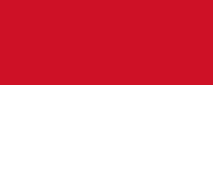INTELLECTUAL PROPERTY RIGHTS IN MONACO

Opposition Term |
N/A |
Registration Term |
10 Years |
First Renewal Term |
10 Years |
Subsequent Renewal Term |
10 Years |
The Trademark Act of 10th June 1983, in force since 1st October 1983 - is the primary law governing the mechanism of trademark registration and protection in Monaco.
Trademarks are registered at the Monaco Patent and Trademark Office.
It follows a 'first-to-file’ system.
Monaco follows the 10th edition of Nice Classification. Multi-class trademark applications are acceptable.
Monaco’s trademark law does not provide opposition after publication. However, trademarks can be challenged at the court of first instance.
A trademark registration in Monaco is valid for ten (10) years from the registration date. The registration is further renewable indefinitely for successive periods of ten (10) years each. The renewal application can be made within six (06) months before expiry.
The grace period to renew a trademark after the date of expiry is six (06) months.
There is no need to prove use any time after the registration is complete. Therefore, cancellation based on non-use cannot be applied.
Monaco is a member of the Paris Convention for the Protection of Industrial Property.
Patents Law no. 606 of 20 June 1955, amended by Law no. 625 of 5 November 1956 - deals with the mechanism of patent protection in Monaco.
For seeking patent protection, the applicant has to contact the Intellectual Property Office in Monaco.
In Monaco, an invention that satisfies the conditions of originality, novelty, inventive step, and industrial applicability, subjects to patentability. Process patent and product patent are the two types of patents that can be protected.
The types of patent applications that can be filed include Non-Convention Application and Convention Application.
Paying an annuity or renewal fee maintains the patent for a period of up to twenty (20) years. Upon the expiry of this period, the invention will enter the public domain, i.e., it will no longer be protected and anyone can use it. The patent owner must pay the first annuity at the time of filing the patent application. The second annuity must be paid before the anniversary date of the patent application.
Oppositions must be filed within nine (09) months from the date of the patent grant. There is no procedure to file a pre-grant opposition.
Industrial Designs Law no. 607 of 20 June 1955, amended by Law no. 623 of 5 November 1956 - governs and deals with the mechanism of registration of industrial designs in Monaco.
To register a design or model at national level, the applicant has to contact the Intellectual Property Division in Monaco. The application should be made manually and cannot be applied through post or fax.
The types of industrial design applications that can be filed in Monaco include Non-Convention Application and Convention Application.
Utility model protection isn't provided under industrial design protection in the nation.
National protection of an industrial design runs for a period of at least ten (10) years. This period may be further renewed up to four (04) times by granting a monopoly on exclusive use of the design for a maximum of fifty (50) years from the date on which the application for registration was filed.
The application for the renewal of a registered industrial design may be filed within the six (06) months leading up to the anniversary date of the first filing, or within a maximum of six (06) months (grace period) after that date with an additional late fee.
The anniversary date is the date on which the registration application was filed plus ten (10) years.
Monaco is a signatory to the Berne Convention for the Protection of Literary and Artistic Works.
Law No. 491 of 24/11/1948 on the protection of literary and artistic works is the basic legislation governing copyright protection in Monaco.
In Monaco, copyright comes into existence as soon as the work is created. No formality is required for obtaining copyright protection.
The period of time during which the rights are protected includes the life of the author and fifty (50) years after his death. In the case of a collaborative work, the starting point of this last period is postponed, for the benefit of all the beneficiaries, upon the death of the survivor of the collaborators. In the case of a posthumous work, protection is granted for the period of fifty (50) years from publication.
The publisher of an anonymous or pseudonymous work is deemed to be the author with regard to the third parties.

